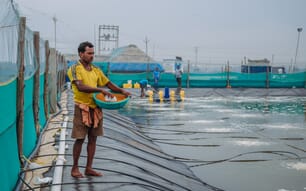Using state-of-the-art genomic selection techniques the R&D team at Hendrix Genetics has performed an extensive disease challenge test where preliminary estimations indicate a 17-23 percent reduction in mortality rates.
Instead of focusing on a limited number of QTL’s (specific parts of the genome that influence a quantitative trait) the R&D team of Hendrix uses genomic selection – as with most traits, many genes in the DNA are coding for an effect on a quantitative trait.
The genomic estimated breeding value (GEBV) for a particular animal in this context is the calculated sum of all these effects. Incorporating information on the whole genomic profile allows more accurate predictions of an animal’s breeding value, beyond just the use of QTLs. Based on the sum of effects, genomic selection proves to be much more effective in reducing mortality caused by SRS.
“The power of genomic selection derives from the large number of genes whose effects, though tiny, are not zero,” says Robbert Blonk, director of R&D at Hendrix. “It is these many thousands of tiny effects that combined add up to a very significant effect.”
Disease challenge results
In cooperation with CORFO, the Chilean economic development agency of the Ministry of Economic, Development and Tourism, the researchers of Hendrix Genetics set up a disease challenge test involving around 1500 fish. In the population three major QTL’s explaining resistance to SRS were found. 40 percent of the animals were carrying the QTL’s with the most favourable genotypes. Survival amongst this group was 24 percent – significantly higher than the average population (8.2%). This implies a reduction in mortality of around 17 percent.

© Hendrix Genetics
The tremendous power of genomic selection for identification of the most resistant individuals is demonstrated by the enormous difference in recorded survival of fish in the challenge test predicted by ranking on GEBV. The results in table 1 show that the 25 fish with the highest GEBV score a survival rate of 80 percent compared to the background population (8.2 percent. When applying the outcome of this test to normal Chilean production circumstances, preliminary estimations result in a reduction in mortality in the range of 23 percent.



